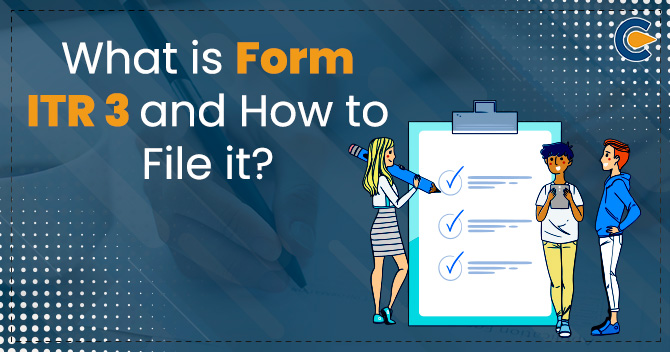Section 40A(2) talks explicitly about the payment of an expenditure to a related person. This means that if you have purchased some goods from a person who is your relative and made payment for those goods and services will come under Section 40A(2) of Income Tax Act. The main aim behind incorporating Section 40A(2) is to stop tax planning.
Tax Planning with Relatives
In order to pay less tax, people usually use certain methods and show less income. For showing less income, they opt for tax planning in a way that they pay a certain amount to their relatives in the form of salary, wages, etc. This way, they will have to pay less taxes.
For example, Mr A earns a total income of 75 lakhs to 100 lakhs, on which various tax slabs, surcharge, and cess is applicable. Now, he has six family members who have no income. To avoid higher taxes, he used to divide his income among his family members to give less tax as lower slab rates would be applicable on a lower income.
- Tax Planning while Purchasing Raw Materials
This is done in a way as, for example, Mr A, who is involved in the manufacturing business, has to buy raw materials. Now, one of his relatives purchases raw material from the market for Rs 100 and sells them to A for Rs 150. The Rs 50 profit will be the income of the relative, and the profit of A will be reduced by that amount. In this way, the tax planning is done in a way to show a huge amount of income in the hands of relatives, thereby reducing the profit of Mr A.
To eradicate this issue, Section 40A(2) of the Income Tax Act was introduced, where ‘A’ will be known as ‘assessee’. Now, if an assessee purchases a raw material and, in return, makes payment to a relative. If the payment made is above the fair market value, then the Assessing officer, at his discretion, has the power to disallow the excessive amount.
- Tax Planning While Selling Goods
Now, there can be another possibility of shifting profit to the relatives. For example, instead of selling goods in the market, the manufacturer can sell his goods to a relative, who can act as a dealer at a lower price, and he will then further sell the goods in the market. Now, the difference amount will be termed as the dealer’s profit, and the manufacturer’s income will be represented less.
Until today, there is no law governing such activity of tax planning which distributes the profit to a relative when selling goods. There have been case laws governing this issue, where the court has determined that the Assessing Officer cannot tell the selling price of the goods. Even in the market, goods are being sold on sale, and AO cannot determine the selling price of all goods and services.
What is Section 40A(2) of the Income Tax Act?
Section 40A(2) of the Income Tax Act specifically says that the amount paid to the relatives is not deductible. The payment made to the relative as a part of the expenditure is excessive or unreasonable or not will be decided by the Assessing Officer at his discretion. If the AO determines the amount paid is excessive, he can disallow it. This section is not mandatory, and it is discretionary at the discretion of the AO. The amount can be termed excessive with regard to:
- Payment made is excessive to the Fair Market Value[1] of the goods and services.
- Payment for Legitimate needs of the business and profession made to the relative.
- The benefits derived by or accruing to him therefrom.
Payment for Needs of Business
Any expenditure made for the legitimate need or requirement for the promotion or expansion of the business. Now, if made to an unrelated person, this payment for the need of the business cannot be disallowed by the AO. At the same time, if the same payment is made to a related person, the AO has the power to decide whether there is a need to incur this expenditure. Even if the payment made to the relative is as per the fair market value but, the AO will allow this payment only if it is the need of the business. Otherwise, the AO will disallow the payment made to the relative for the business’s needs.
Who are Related Persons?
If The Assessee Is an Individual
- If the assessee is an individual, all the relatives of the assessee will be his relatives, such as mother, father, son, daughter, etc.
- If the individual assessee has a considerable interest in the business of any person engaged in commerce or profession, or if any relative of the individual assessee has a substantial interest in the business of such person, then such person is the designated person of the individual assessee.
If The Assessee Is a Company
- The specified person of the assessee-company is a director of the assessee-company or a family of such a director.
- The designated person of the assessee-company is any individual having a significant stake in the enterprise or line of work of the assessee-company, whether that individual or a related of that individual.
- Suppose the assessee company, a director of the assessee company, or a family of such director has a substantial stake in that person’s business. In that case, that person qualifies as the designated person of the assessee company.
If The Assessee Is a Firm
- The designated person of the assessee-firm is a partner of the company or a close family member of such a partner.
- Any individual who is engaged in business or practice is the firm’s specified person if the firm, a partner of the firm, or a relative of such partner has a significant stake in that person’s enterprise.
If The Assessee Is A HUF
- The designated individual of the assessee HUF is a member of their family or a close relative of such a member.
- Any person engaged in business or practises is the HUF’s designated person if that HUF member, a member of their family, or a related member has a significant financial stake in that person’s enterprise.
If The Assessee Is an AOP
- The designated individual of the assessee AOP is a member of AOP or a family of such a member.
- Any person who is engaged in business or practice is the designated person of the AOP if the AOP, a member of the AOP, or a relative of one of those members has a significant financial stake in that person’s enterprise.
Understanding Substantial Interest
Suppose a “specified person” owned shares in the prior year and had at least 20% of the voting power in that particular prior year. In that case, that person is deemed to have a considerable interest in the company or profession. These shares shouldn’t have been eligible for a fixed dividend rate or the chance to partake in earnings. In other situations, the taxpayer is considered to be specified if entitled to at least 20% of the business or profession’s profits in a prior year. Only if the requirement of considerable interest is met will the applicable deductions for costs under the Act be approved.
Conclusion
Section 40A(2) Of the Income Tax Act was introduced to reduce the tax planning with relatives to show less income. Still, this is not a mandatory section. It depends upon the discretion of the AO to either allow or disallow the unreasonable and excessive amount.
Read Our Article: TDS Provisions & Restrictions: Disallowance Of Section 40(A) (Ia) And 40a (3)











